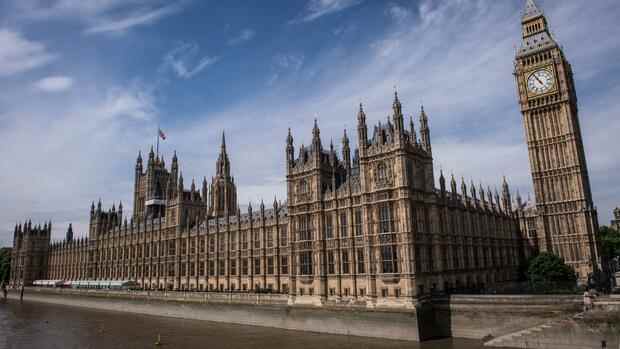London The British Parliament towers imposingly on the Thames. The Victorian palace is an eye-catcher for tourists, a faithful companion for Londoners and a symbol of the United Kingdom for all. But inside the national icon, the glory is quickly over.
The mustiness of 150 years blows through the venerable rooms. Parliament itself reports “crumbling stones, cracks in the ceilings and warped windows”, and there is water damage. For decades, only the bare essentials have been patched, mice are running through the aisles. Westminster Palace is in need of redevelopment. But the debate about the renovation is stalled.
MEPs are sounding the alarm. The famous building in the heart of the capital is threatened with a fate like that of Notre-Dame Cathedral in Paris, which was badly damaged in a major fire around three years ago, ex-Minister Andrea Leadsom told the BBC over the weekend. “It could burn down today, or tomorrow, or any day,” warned the conservative politician. In 2017, a fire was only avoided thanks to the fire watch, which is on duty around the clock in Parliament. “We have to make a decision and move forward.”
So far, however, the MPs have not been able to reach an agreement. Because it involves a lot of money – and a lot of time. In February, a report by the responsible program commission estimated the costs at seven to 13 billion pounds (8.3 to 15.4 billion euros). The construction period: 19 to 28 years. In addition to improved fire protection, asbestos removal, new cables and conservation work are necessary. The building, built between 1837 and 1860, is also threatened by flooding.
Top jobs of the day
Find the best jobs now and
be notified by email.
But all the figures and data only apply if the MPs leave the building for twelve to 20 years. If there is only a partial clearance, the estimates increase significantly. And if work has to be done around members of parliament and staff, Westminster Palace will become an expensive permanent construction site: between 46 and 76 years would then be needed, at a cost of eleven to 22 billion pounds.
disagreements between members
The delay is also due to disagreements between members of the two chambers, each based in the Houses of Parliament. First, an alternative location has to be found, but even that is difficult.
So the Lords, as members of the House of Lords are called, want to stay close to the House of Commons. The Queen Elizabeth II Center conference building not far from Parliament, which was under discussion as an alternative location, was rejected by the government.
Building Secretary Michael Gove, as the responsible cabinet member, favors a move to a very different area. “I realize that a change in the House of Lords, even for a temporary period, would be widely welcomed,” the BBC quoted Gove’s letter to Lords John McFall as saying. “I know that cities and towns across the UK would be happy to extend their hospitality to the peers.”
The UK Building Secretary would welcome a move of Parliament to another area.
(Photo: AP)
A year-long move to a city outside of London would also symbolically support Prime Minister Boris Johnson’s “Levelling Up” program, which Gove is responsible for.
>> Read also: Unemployment in UK at its lowest in 48 years
But the minister meets with resistance. Member of the House of Lords Helene Hayman even senses a conspiracy. The House of Lords has been doing its job temporarily blocking highly controversial Conservative government proposals, Hayman, a former Labor MP in the House of Commons, told the BBC. “They’re pretty mad at the House of Lords. Kicking us out is punishment.”
Experts fear that the political haggling will further delay the billion-euro project. Political scientist Matthew Flinders said all sides would blame each other for shying away from unpopular decisions.
More: Northern Ireland dispute: The worst political earthquake in the English Channel since the Brexit referendum is imminent
